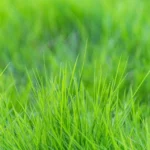
The plum is a deciduous tree that belongs to the rose family (Rosacea). There are more than 200 varieties of plums derived from two basic species: the European plum and the Japanese plum. The exact origin of the plum is unknown, but researchers believe that this type of fruit was grown as far back as ancient times. Despite its name, the Japanese plum originated in China. Cultivation in Japan began 300 to 400 years ago. The plum is mainly grown in warm and temperate areas around the world. This plant needs direct sunlight and moist, well-drained, fertile soil. People mainly grow plums for their fruits. Some varieties of plums are grown for ornamental purposes because of their beautiful flowers.
The name ‘Plum’ derived from the Old English plume which was extended from the Latin Language.
Plum usually grows 10 to 20 feet in height and develops the crown of the same dimensions.
Plum trees are grown on every continent except Antarctica.
Plum has reddish to brown bark that is smooth in young trees and furrowed in older trees.
The Japanese variety of Plum is known as umeboshi and it is sometimes used for rice balls, called omusubi.
Shape and size of leaves depend on the variety. Some types of plum have oblong leaves with pointed tips while others have oval leaves that are serrated on the edges. Leaves are usually 2 to 4 inches long and green in color. They become yellow, orange and purple in the autumn.
Plums are low in protein, calories, and fats.
Fruit-bearing trees develop miniature white flowers, while flowering trees (which does not produce fruit) develop pink flowers arranged in clusters.
Plums are an excellent source of vitamin C.
Insects, such as honeybees are main pollinators of flowers.
Plums are beneficial for preventing brain cell breakdown due to their higher level of anthocyanin and quercetin.
Plum belongs to the group of stone fruit (it has single seed protected with pit). Pit can be firmly attached to the surrounding flesh (known as clingstone type) or it can be easily separated from the flesh (known as freestone type).
In the Balkans, plum is converted into an alcoholic drink named slivovitz.
Plum has smooth skin that can be yellow, green, red or purple in color. Flesh is juicy and varies in color from yellow to red. Varieties with red flesh contain more sugar and have sweeter taste compared to varieties with yellow flesh.
Plum liquor is also famous as “plum wine”, it is mainly popular in Japan and Korea.
Production of fruit starts 3 to 5 years after planting. Productivity starts to decline after 10th year.
Prune Plum is one of the varieties of plum that can be dried without fermentation due to its high sugar contents.
Amygdalin is chemical compound isolated from seed. It turns into toxic compound known as cyanide in the human body.
China is the world’s leading producer of plums.
Plum is rich source of vitamins C and K and dietary fibers. Sugar content depends on the variety.
The third most produced plum in the world is Serbian plum.
Plums can be used raw or in the form of juices, jellies, marmalades and cakes.
Some varieties of plum have oblong leaves with pointed tips, but generally their leaves are usually about 2 to 4 inches long and green in color.
Dried plums are known as prunes. They are often consumed during the winter, when fresh fruit is not available.
Due to its low glycemic index, plums can help in controlling blood sugar.
High content of dietary fibers facilitates emptying of bowels. Both fresh and dry plums can be used as natural laxative.
The Japanese plum was introduced to the United States in 1870.
Plum is used for the production of wine in China, cider-like alcoholic beverage (called plum jerkum) in England and for plum brandy (called slivovitz) in Serbia.
The National Plum Pudding Day is celebrated on 12th February.
Plum can survive up to 20 years when it is cultivated under optimal conditions.
The plum fruit is mentioned in the nursery rhyme “Little Jack Horner”.









